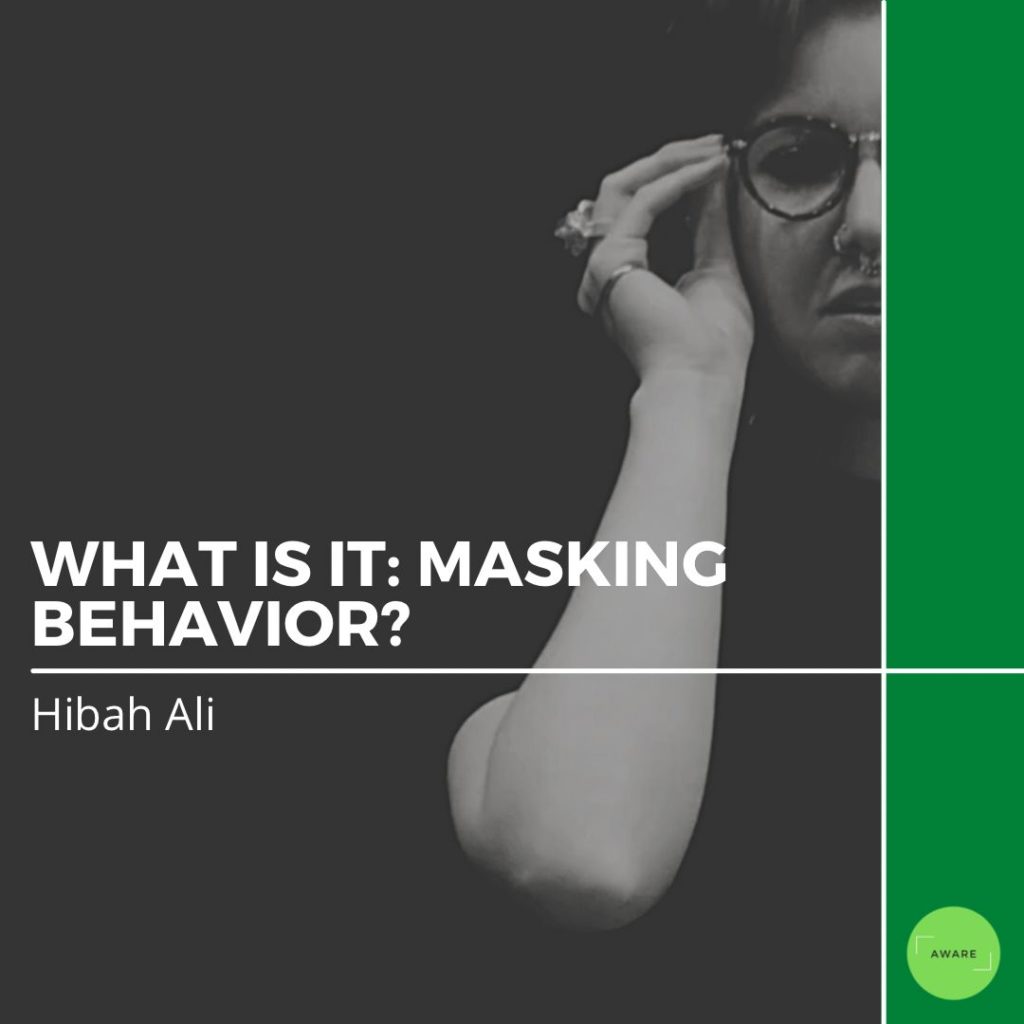Masking, in general terms, is defined as the process of concealing something, of being hidden from view and public perception. When applied in social terms, it is the process of hiding our true feelings, thoughts, and perceptions to fit in the proposed social environment. This behaviour is commonly practiced among individuals who are neurodivergent.
Masking and Neurodiversity
Masking in the context of neurodiversity is the process of intentionally hiding neurodivergence, neurodivergent traits, and unique internally developed mechanisms of processing and interacting with the world. Essentially, masking is designed as a social strategy to blend in with the neurotypical social majority. This means consistently making a conscious effort to camouflage oneself and their natural behavioral tendencies to pose as being “normal”. For example, those who haveADHD can display characteristics of hyperactivity. Within a classroom environment, a child with ADHD might find it challenging to sit still or not fidget. Therefore, they are taught to suppress these inclinations from an early age at the cost of their mental health. This process of conforming to social pressures is reiterated constantly. On the contrary, studies have shown children with ADHD who engage in excessive movements can receive benefits in increasing their prefrontal cortical arousal and alertness when they have to engage in academic and cognitive tasks. Therefore, tools such as fidget spinners and stress balls are being considered as self-regulation tools within the classroom environment to help students be engaged with their assignments and tasks. This shows us how once we begin to embrace neurodiversity in a social setting, we can start to tackle and root out masking behavior at its core.
Masking and Burnout
This process of constant social camouflaging can have adverse effects. This consistent forceful behavior of using any strategy to suppress natural behaviors can take a massive toll on a our mental health. The fear surrounding the stigma of being different from peers or the social majority festers and leads to a greater chance of developing anxiety and depression. In the short term, this mechanism seems foolproof in keeping neurodivergent individuals safe from societal marginalization and stigma. However, in the long term, it serves as an inhibitor. For instance, if we take the same example of a child with ADHD suppressing their hyperactive tendencies to move and use their energy to sit still, their attention and focus are being used to mask rather than learn what is being said in the present moment of the classroom, thus making the situation worse for the individual. The cognitive load increases for the individual and delays the process of receiving the necessary support to thrive in these social situations.
Additionally, it is essential to note that the mask eventually slips. Therefore, it is not an acceptable solution to coming to terms with how neurodivergent brains operate and see the world, as suppressing inherent tendencies does not make them disappear. As such, it is crucial to raise awareness about these maladaptive behavioral patterns that cause so much anguish within a person. Studies have shown that identity consolidation has been linked to greater wellbeing, less risky health behaviour, and better coping strategies. Therefore, it is imperative to create environments that celebrate neurodivergent traits and not force individuals to conform to them under social pressures.
